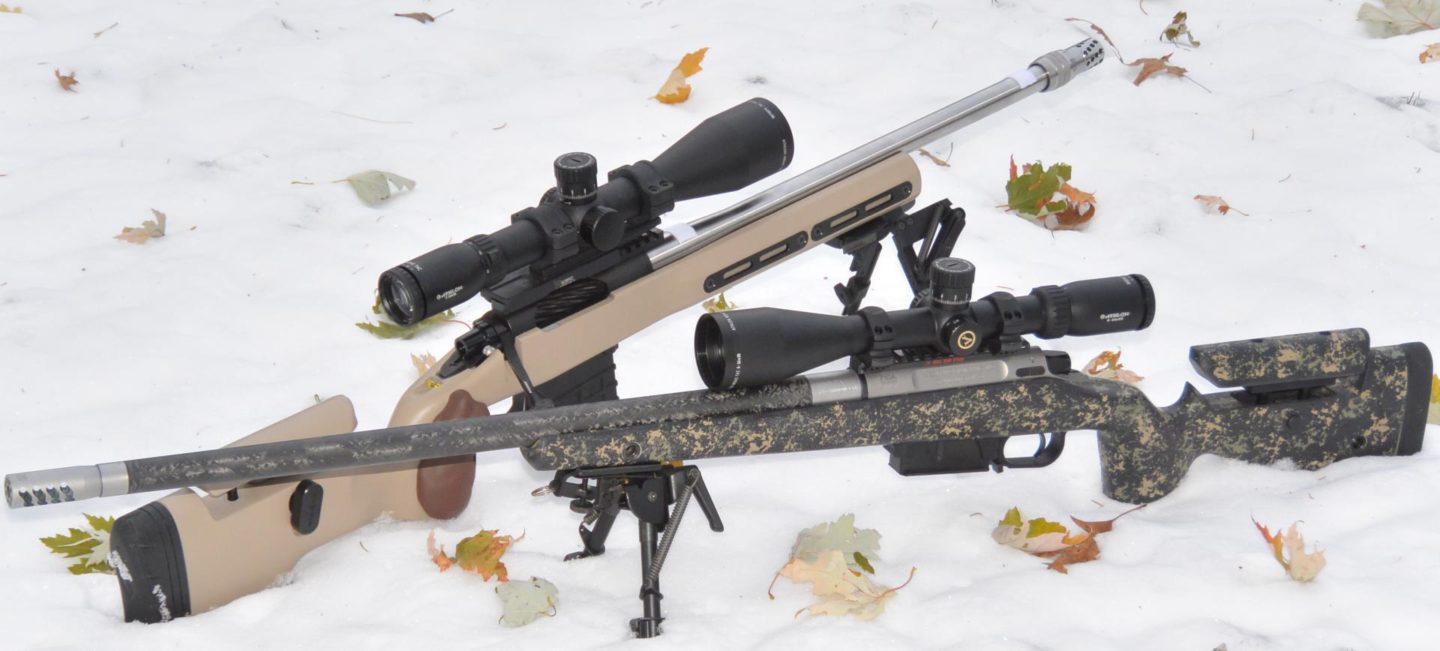Athlon Midas TAC 5-25x56mm on Kelbly Atlas Tactical with it’s Favorite Lapua Ammo

Table of Contents:
– Background
– Unboxing and Physical Description
– Reticle
– Comparative Optical Evaluation
– Mechanical Testing and Turret Discussion:
– Summary and Conclusion
– Testing Methodology
Background:
This Midas Tac 5-25×56 is the third scope I have reviewed from the relatively new Athlon optics company. Started and run by a couple of optical industry alums, Athlon sources optics from a number of different overseas OEM’s which are made to the companies’ specifications. Based on the company’s growth rate and customer satisfaction, the Athlon guys appear to be quite good at this. Certainly the scopes I have seen from them have proven predictably reliable and with features that I judge to be well chosen for the marketplace. Furthermore, Athlon appears to have a very rigorous quality control apparatus in place, as the scopes I have seen have much lower than average deviation from specifications when it comes to adjustment magnitude, reticle size, and reticle alignment. The predictability of their function is starting to make them rather dull to test.
Today’s scope, the Midas Tac 5-25×56, is a new scope being added to their existing Midas TAC line. It’s sort of a gap-filler. It is of similar glass quality and magnification to the existing Midas TAC 6-24×50, but has a larger 56mm form factor more in line with the higher end ARES ETR 4.5-30×56. You could choose to see it as a lower cost alternative to the ARES ETR 4.5-30×56, which it is similar in size to or as a larger alternative to the Midas TAC 6-24x that it shares relative glass quality with.
Unboxing and Physical Description:
We may as well start the theme of this review right here. There were no surprises in the unboxing. The Athlon Midas TAC 5-25×56 comes with a lens cloth and manual just like its little brother the Midas TAC 6-24×50 did. It is styled very similarly and, from the objective to the tube to the eyepiece, it just appears to be a slightly bigger version of the same idea. The 5-25×56 is about 4oz heavier, just under an inch longer, has a 34mm instead of 30mm tube, and, of course, has a 56mm objective instead of 50mm. Probably, the biggest highlights are the 32mil instead of 25mil total elevation adjustment and the larger 5x instead of 4x magnification ratio. 32 mils is actually a pretty large adjustment range at any price these days, and the Midas TAC 5-25×56 is not a high cost optic. The manual included with the Midas TAC 5-25×56 I received for testing appears to be the same one as the Midas TAC Athlon Midas TAC 6-24×50 from last year. In fact, its section with scope dimensions has not been updated to include the 5-25×56. I received this scope just before they hit the market generally, so it is likely from the first run and the manual you will receive had not yet been printed. Hopefully they update the troubleshooting section of the new one to remove the suggestion to directly support the barrel with a sandbag, as well as the text about excessive grease in the barrel. There should be no grease at all in a barrel at the time of firing.
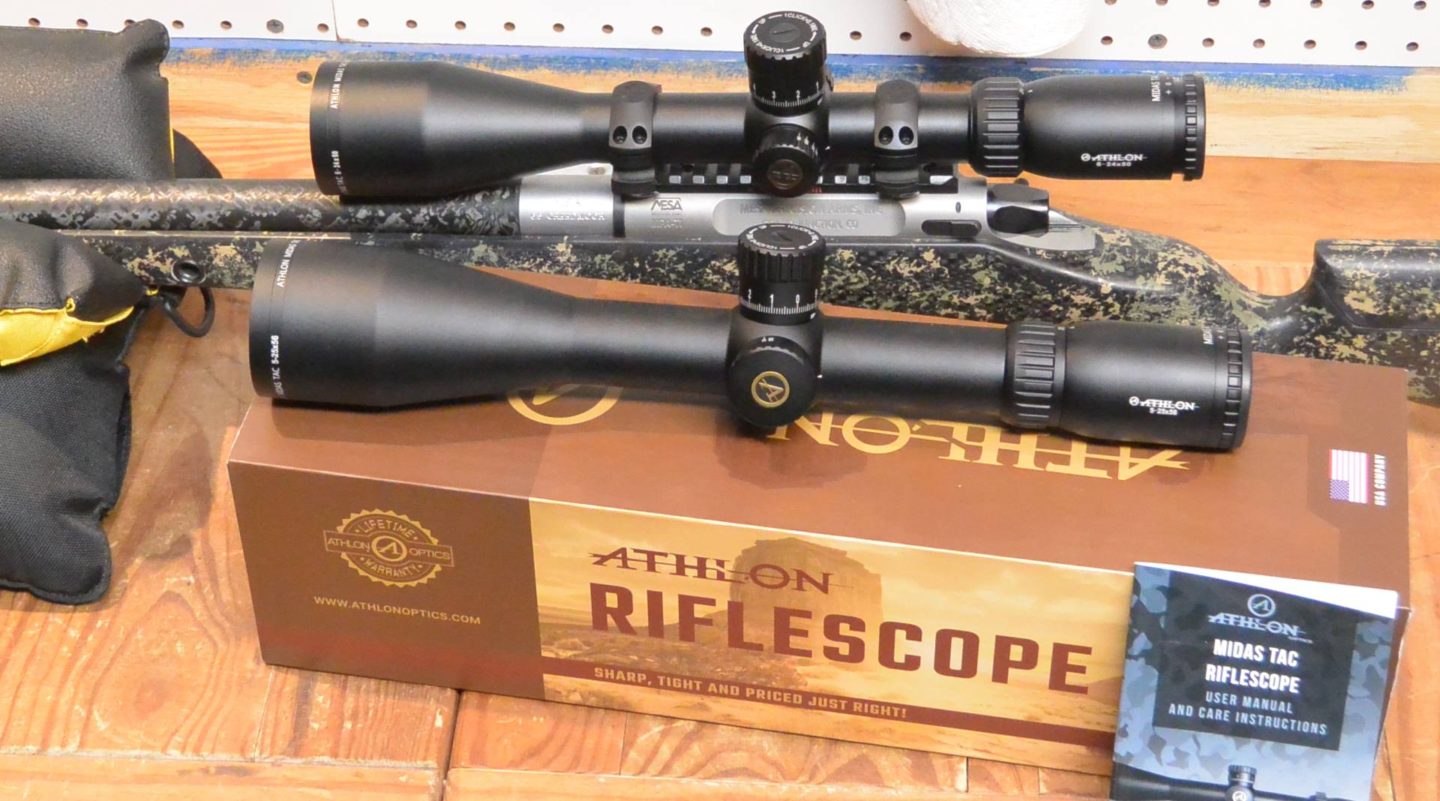
Reticle:
The Athlon Midas TAC 5-25×56 is available with just one mil and one MOA reticle option. The mil option, the APRS3, is a typical mil hash Christmas tree reticle with a floating dot center and .2 mil increments horizontally out to 6 mils then .5 mil increments after that out to 9 mils, at which point there is just a thick crosshairs. Vertically, the reticle is graduated in .2 mil increments for just one mil. At that point, the top half is graduated in .5 mil increments out to 9 mils and then it becomes a thick crosshairs, while the bottom half is graduated in .5 mil increments out to 7 mils, where it goes back to .2 mil increments until 10 mils, at which point it becomes a thick crosshairs. While there is probably some rationale for the alternating use of a .2 mil graduation system and a .5 mil one, this is not fully explained anywhere, though even if it were, I likely wouldn’t agree with it over the consistency of sticking with the .2 mil increments throughout. Both vertical and horizontal crosshairs are numbered every 2 mils and are on the thinner than average side when it comes to line thickness. The Christmas tree section has rows of dots every mil below the central crosshairs. Each row is graduated in fine dots every .2 mils and a thicker dot every mil. The MOA based reticle, the APLR4 FFP MOA, has essentially the same appearance as the mil reticle. Unsurprisingly, its graduations are spaced 1 MOA apart. The APRS3 Christmas tree mil hash reticle is very much in line with what I see the industry converging to and the alternation between .5 and .2 mil increments at places is really the only bone I have to pick with it.
When tested, the reticle showed a very slight cant of ~.5 degrees counter-clockwise relative to the adjustments. This is not an amount of deviation I would be concerned about. The reticle graduations were correctly sized.

Comparative Optical Evaluation:
For optical comparisons with the Athlon Midas TAC 5-25×56,I had the entire suite of sub $1K FFP mil/mil precision riflescopes that have been part of this ongoing series of reviews. In order of arrival, they are the: Sightron SIIISS624x50LRFFP/MH, Athlon Ares BTR 4.5-27×50 FFP IR Mil, Athlon Midas TAC 6-24×50, Meopta Optika6 5-30×56 RD FFP, Sightron S-TAC 4-20x50FFPZSIRMH, and Nikon Black FX1000 6-24x50SF Matte IL FX-MRAD. It should be noted that, at the time of this writing, the Nikon was not present to be compared as the example. It had proved defective, was returned, and its replacement had not yet arrived. Testing of all the scopes was done in accordance with the same methodology that I have used now for a number of years.
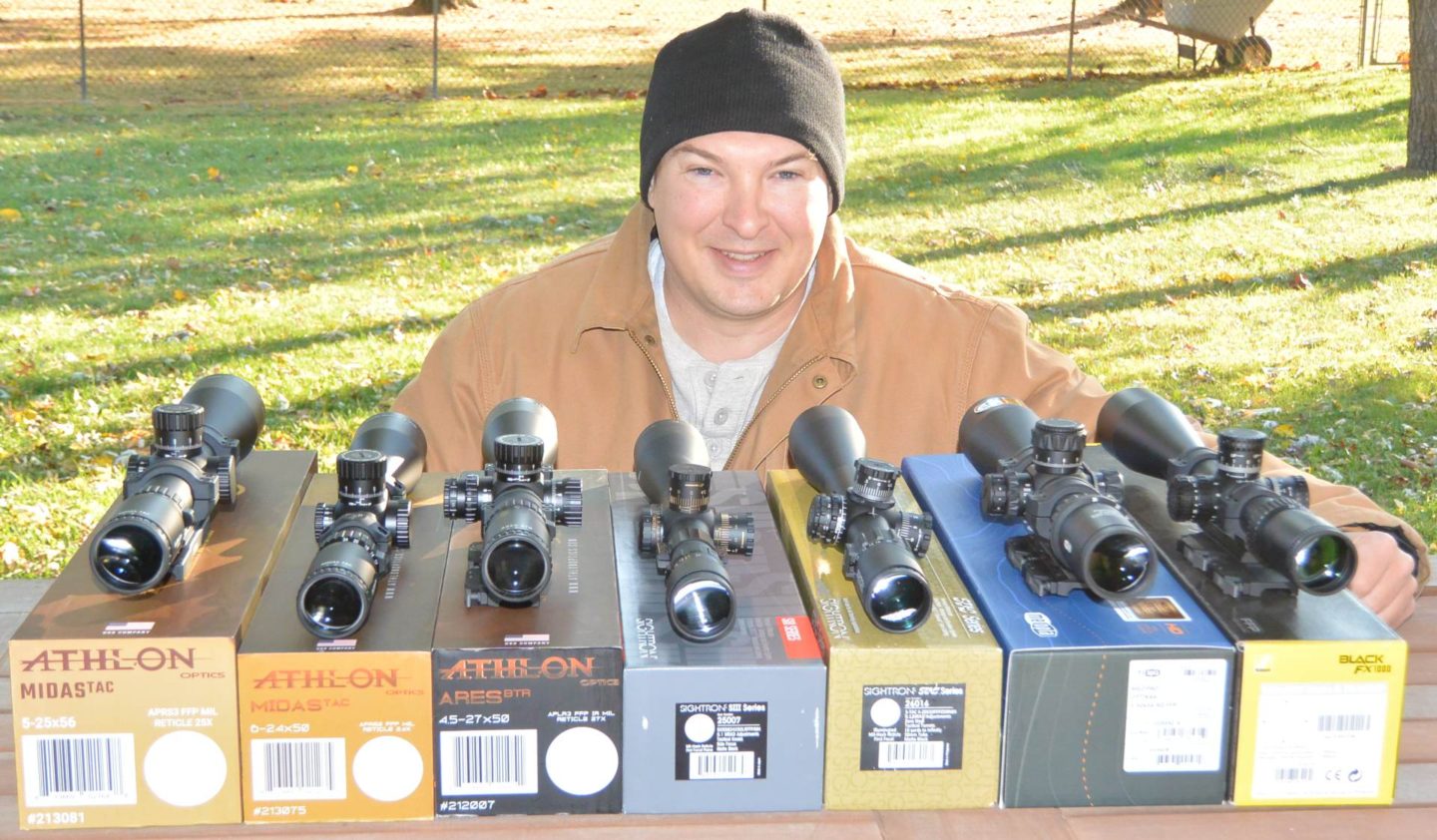
On balance, the Athlon Midas TAC 5-25×56 is optically the best of the Athlon scopes tested and on the better side of the field of sub $1K scopes overall. Its strongest points were field of view, depth of field, low light performance, and contrast. In these aspects it was either the best performer or close to it. The TAC 5-25×56 was more middle of the pack when it came to resolution, eyebox, barrel distortion, stray light handling, and chromatic aberration. In no aspect of optical performance that I measured did the TAC 5-25×56 test in the bottom 3rd of scopes tested. I think that the avoidance of any real weaknesses might speak as well for the scope as the overall above average finish. There is something to be said for an optical design balanced well enough that it really doesn’t stumble in any single design criterion.
Mechanical Testing and Turret Discussion:
The Athlon Midas TAC 5-25×56 features a virtually identical large uncapped 10 mil per turn zero stop elevation adjustment to that of the Midas TAC 6-24×50. Both scopes adjustments have the firm, postitive, “clicky” feel. that comes from a high ratio of click force / rotation force between clicks. This does mean that you will occasionally over-rotate with them or lose click count and have to look at the dial. The Midas scopes are not the most difficult in this regard, but it will happen occasionally. I think the ratio of click force / rotation force between clicks is a difficult decision for optics makers. People generally greatly prefer this “clicky” feel and dislike the squishy feel that you get if the ratio of click force / rotation force between the clicks is low. However, it is difficult to have that positive “clicky” feel and also have a knob that the user won’t occasionally over rotate or loose count and have to break position to check on. Athlon has experimented both ways on this in the past and has understandably gone with the customers preferred feel. You do not make money telling people what the ought to want, you make it by producing what they already want.
Just like the smaller Midas, the 5-25×56 has a smaller capped windage knob. This knob is a 10 mils per turn knob that is marked 1-5 in each direction. The windage knob on my 5-25×56 is significantly stiffer and “clickier” than it was on the TAC 6-24×50, and, as a result, is easier to over-rotate or lose click count on. The power ring and parallax knob on the Midas are on the looser side of average with the euro-style diopter ring about average. The diopter rings on both Midas scopes seem to have a bit more correction range than on most scopes which I classify a win since I recently had an issue with a competitor who had so little range that I couldn’t even focus my 20/20 uncorrected eye all the way back to its optimum 20/15 or so.
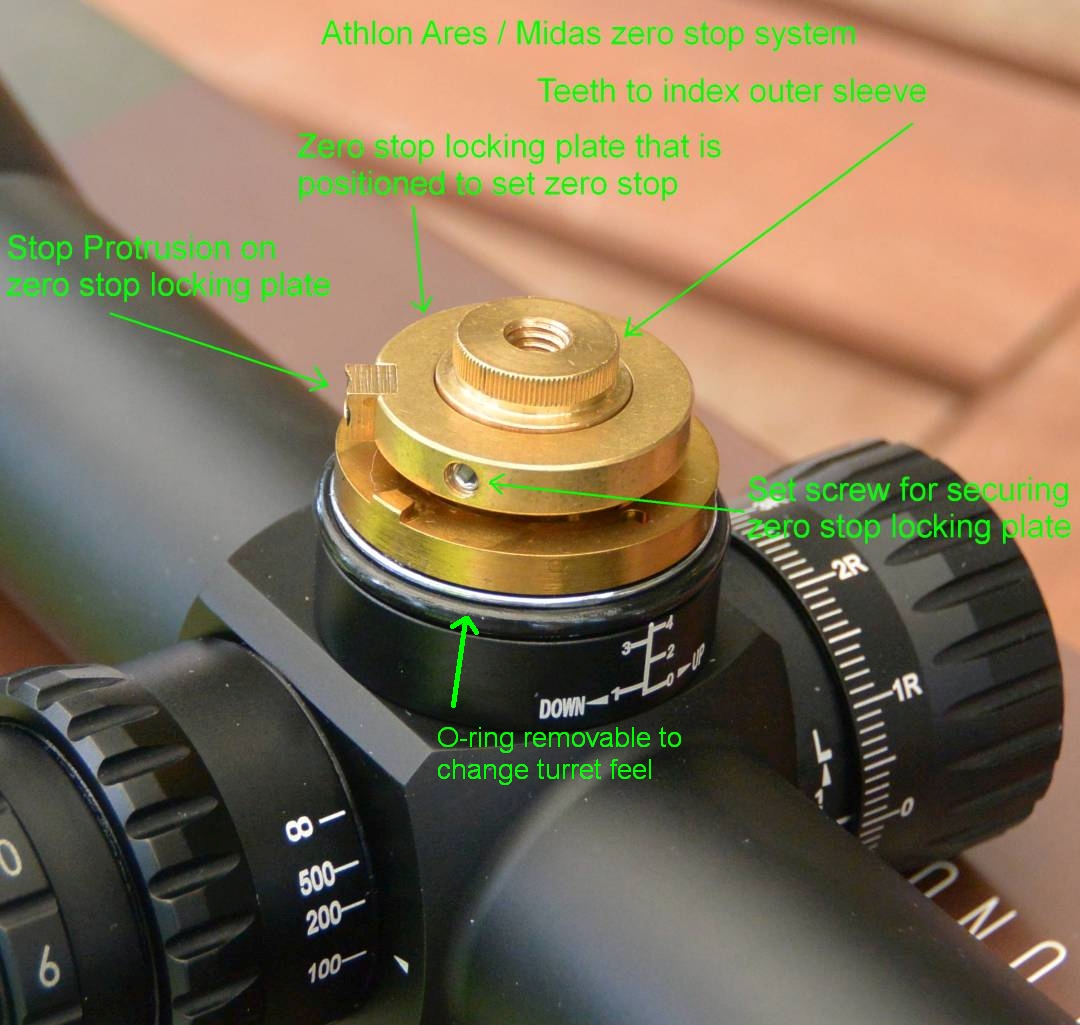
The Midas TAC 5-25×56 elevation knob’s features and design are common to all of the Athlons I have tested so far. They are 10mil per turn and feature Athlon’s particular zero stop system, as well as an outer knob with the mil graduation markings on it that can be repositioned. Repositioning the markings to read zero at the rifle’s zero is done in the common way. The outer knob pops off and can be repositioned after removal of a single screw in the top. This outer knob is toothed with enough teeth that its markings will properly line up with the actual detents instead of landing between as some others have done. The zero stop system is one that both Midas TAC scopes share with the Ares BTR but that I have not seen on other optics. As is common, the whole elevation knob on the Midas screws up and down as the adjustment it rotated. This attribute forms the basis of both the zero stop and the simple scribed turn indicator. The zero stop consists of a brass disc they refer to as the “zero stop locking plate” located under the removable outer adjustment sleeve. This disc can be repositioned using three set screws. So, basically, you zero the scope, remove the outer sleeve, loosen the set screws, and move the disc so that it is lying flat on the saddle with its stop protrusion immediately to the right of the stop protrusion on the scope saddle. You then gently tighten the set screws and replace the sleeve and its screw with the proper alignment of the zero. This zero stop is very inexpensive to make, in addition to being quite functional. It also has the same advantage as most plunger style systems in that you can set it independently of the markings to give you a few tenths of adjustment below the zero if you want. It is a well designed system and I’m a fan.
In testing, the scope tracked absolutely dead nuts from 0 up to 17.4mils, returned to zero fine, and then tracked down from zero right on the money to 17.1mils for a total travel of 34.5mils. This travel range is even a bit more than the already generous 32mils advertised. Unsurprisingly, the Midas TAC 5-25×56 also tracked fine to the 4mils each way that I can measure horizontally and showed no zero shift with adjustment of the parallax, diopter, or power ring. The parallax knob even showed exactly 100yds when focused at 100yds and those things are never right.
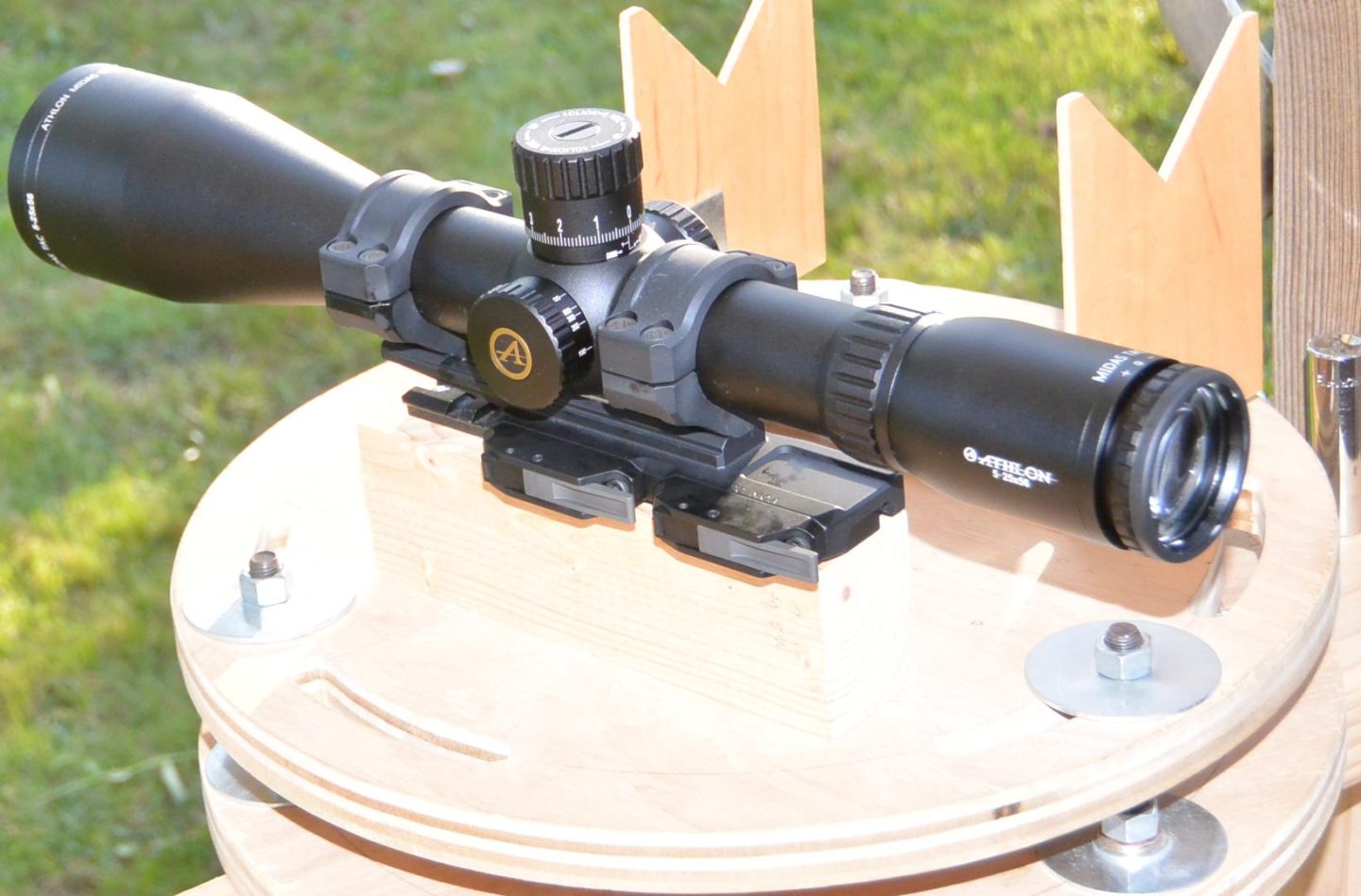
Summary and Conclusion:
The pattern emerging with these Athlon scopes is that they are solid predictable performers with good value at their price points and with the most in-demand features. The quality control on the three scopes I have seen has been superb, as two of the three showed no measurable deviation at all from perfect in adjustment increment and the other was still better than average. Similarly, all three had properly sized reticles and none had cant of more than .5 degrees. This is a rather impressive record.
Optically, all the Athlons I have tested have met or exceeded my expectations. Overall, this one was the best performer, landing well on the higher performing half of all the sub $1K scopes tested. Larger 56mm scopes are not my favorite, as I typically see little gain for the extra size and weight of over 50mm scopes. In this case though, you do get significantly more elevation range, and the optical design itself is a little better optimized than either of its 50mm brethren.
The street price on this Midas TAC 5-25×56 is around $850, making it about the same as the Ares BTR 4.5-27×50 and ~$200 more than the Midas TAC 6-24×50. All three of these scopes make good arguments at their price points so I think that Athlon has done a pretty good job of the tricky work of product positioning. It is not hard to see why the company is having such success.
Here is Your Pro and Con Breakdown:
Pros:
– Optics are significantly better than average at the price and well optimized
– Tracked perfectly
– Properly sized reticle with very little cant
– Athlon’s QC is starting to look pretty superior
– Very simple effective zero stop that lets you chose travel below zero if you want.
– Full 10mil/turn knobs
– Superb 32mil elevation travel
– Reticle design in line with current trends
– Good warranty and reputation
Cons:
– 56mm objective does add size and weight
– You will occasionally lose click count on the “clicky” adjustments and need to look at the graduations.
– No illumination.
– Basically no extras like scope caps, sunshade, or bra
– Relatively new company with short, though good, track record
